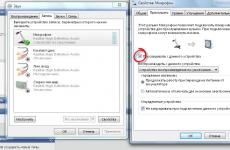What are the firefighting briefings in the divisions of the enterprise. When an unscheduled firefighting briefing is carried out. What does that require
Firefighting training can be carried out in different cases: when hiring, when getting to know the workplace, when new equipment is put into operation, etc.
Introductory firefighting briefing
This type of briefing should be completed by all people recruited. This category includes both travel and internship students.
By carrying out introductory briefing a software engineer fire safety or labor protection. The main purpose of this briefing is to give the employee the knowledge that will allow him to follow the system in the future. fire prevention measures at the enterprise.
Typically, an introductory briefing is a brief introduction to the basic requirements of fire safety, current regulations, the most dangerous areas of production, etc. Among other things, the instructed person is familiarized with the basics of using primary fire extinguishing equipment, the evacuation procedure and other practical actions carried out in the event of a fire.
The introductory briefing is carried out in the labor protection office, where it is possible to show the worker the means of fire extinguishing and fire communication, as well as to familiarize him with visual aids on fire safety (posters, photographs).
Initial on-the-job briefing
Before starting work, the employee must be instructed at the workplace. The person is told about the possible fire hazard nearby devices and units, materials used in production.
The employee is instructed on the subject of local escape routes, his duties in the event of a fire, the procedure for calling the emergency rescue service, etc.
Unscheduled firefighting briefing
This type of briefing is carried out in the event of the introduction of new production standards, the launch of new equipment, and changes in technological processes. In addition, unscheduled fire safety briefing is carried out for fire safety violators and at the request of the state fire supervision.
Unscheduled instruction is carried out both individually and in a group form.
Targeted firefighting briefing
Targeted briefing is carried out in the event that an employee performs one-time work that is not related to his main activity or specialty. This usually happens when performing work that requires a work permit.
Regardless of the type of briefing, at the end of it, the instructor checks how well the employee has mastered the fire safety rules. After checking the knowledge, an entry is made in the instructing journal with the obligatory signature of the instructed person.
By order of the Ministry of the Russian Federation for civil defense, emergencies and liquidation of consequences natural Disasters dated December 12, 2007 No. 645 "On the approval of fire safety standards" Training in fire safety measures for employees of organizations ") the following types of fire safety instruction are defined:
- introductory;
- primary in the workplace;
- repeated;
- unscheduled;
- target.
When conducting any type of fire safety briefing, an entry is made in the Register of fire safety briefings with the obligatory signature of the instructor and instructor.
Introductory firefighting briefing
Introductory firefighting briefing carry out:
with all employees newly recruited, regardless of their education, length of service in the profession (position);
with seasonal workers;
with students who arrived at industrial training or practice;
with other categories of workers (citizens) by decision of the head of the educational institution.
The introductory briefing with employees is carried out by the person responsible for fire safety, who is entrusted with these duties by the order of the head.
If opportunities are available, appropriate specialists can be involved in conducting individual sections of the introductory briefing.
Introductory briefing is carried out in a specially equipped room using visual aids and teaching materials.
The introductory briefing is carried out according to the program developed by the person responsible for fire safety, taking into account the requirements of standards, rules, norms and instructions for fire safety. The program of the induction briefing is approved by the order of the head of the educational institution. The duration of the briefing is set in accordance with the approved program.
Introductory firefighting briefing ends practical training actions in the event of a fire and verification of knowledge of fire extinguishing equipment and systems fire protection.
Initial firefighting training in the workplace
Primary firefighting briefing is carried out directly at the workplace:
with all newly hired;
with those transferred from one department of an educational institution to another;
with employees doing new work for them;
with workers sent to an educational institution;
with seasonal workers;
with specialists building profile performing construction and installation and other work on the territory of an educational institution;
with trainees who have arrived for industrial training or practice.
The primary fire safety briefing with the indicated categories of workers is carried out by the person responsible for ensuring fire safety (if any structural units responsible for ensuring fire safety in each structural unit), appointed by order of the head of the educational institution.
Primary fire safety briefing is carried out according to a program developed taking into account the requirements of standards, rules, norms and instructions for fire safety. The introductory briefing program is approved by the head of the educational institution (structural unit) or the person responsible for the fire safety of the educational institution (structural unit).
Initial fire safety briefing is carried out with each employee individually, with a practical demonstration and development of skills to use primary funds fire extinguishing, actions in the event of a fire, evacuation rules, assistance to victims.
All employees of an educational institution (the number of students and employees of which exceeds 50 people) must practically show the ability to act in case of fire, use primary fire extinguishing means.
Initial fire safety briefing is possible with a group of persons servicing the same type of equipment, and within a common workplace.
Re-instruction
Repeated fire safety briefing is carried out by the person responsible for fire safety, appointed by order of the head of the educational institution, with all employees, regardless of qualifications, education, length of service, nature of the work performed, at least once a year.
Repeated firefighting briefing is carried out in accordance with the training schedule approved by the head of the educational institution.
Repeated firefighting briefing is carried out individually or with a group of workers serving the same type of equipment within a common workplace according to the program of primary firefighting briefing at the workplace.
During the repeated fire-fighting briefing, knowledge of standards, rules, norms and instructions for fire safety, the ability to use primary fire extinguishing equipment, knowledge of escape routes, fire warning systems and management of the evacuation process are tested.
Unscheduled instruction.
Unscheduled firefighting briefing is carried out:
when new or changing previously developed rules, norms, fire safety instructions, and other documents containing fire safety requirements are introduced;
when replacing or modernizing equipment, tools, as well as changing other factors that affect the fire safety of an educational institution;
if employees of an educational institution violate fire safety requirements, which could or have led to a fire;
for additional study of fire safety measures at the request of the state fire supervision authorities if they reveal insufficient knowledge among employees of an educational institution;
during breaks in work for more than 60 calendar days;
upon receipt of information materials about accidents, fires that occurred in educational institutions;
when establishing the facts of unsatisfactory knowledge by employees of an educational institution of fire safety requirements.
Unscheduled fire safety briefing is carried out by the person responsible for ensuring fire safety in educational institution, individually or with a group of workers of the same profession. The scope and content of unscheduled fire-fighting instructions are determined in each specific case, depending on the reasons and circumstances that caused the need for it.
Fire safety briefing is carried out with the aim of communicating the basic requirements of fire safety to the employees of organizations, studying the fire hazard of technological processes of production and equipment, fire protection means, as well as their actions in the event of a fire.
Fire safety briefing is carried out by the administration (owner) of the organization according to special training programs for fire safety measures for employees of organizations (hereinafter - special programs) and in the manner determined by the administration (owner) of the organization (hereinafter - the head of the organization).
When conducting fire-fighting instructions, the specifics of the organization's activities should be taken into account.
Fire safety briefing includes familiarizing employees of organizations with:
- rules for the maintenance of territory, buildings (structures) and premises, including evacuation routes, outdoor and internal water supply, fire warning systems and management of the evacuation process;
- fire safety requirements, based on the specifics of the fire hazard of technological processes, industries and facilities;
- measures to ensure fire safety during the operation of buildings (structures), equipment, fire hazardous work;
- rules for the use of open fire and hot work;
- duties and actions of employees in case of fire, call rules fire department, rules for the use of fire extinguishing equipment and fire automation installations.
By the nature and timing of the firefighting briefing, it is subdivided into: introductory, primary at the workplace, repeated, unscheduled and targeted.
An entry is made on the conduct of introductory, primary, repeated, unscheduled, targeted fire safety briefings in the log book of conducting fire safety briefings with the obligatory signature of the instructor and instructor.
- Introductory firefighting briefing is carried out:
- with all employees newly recruited, regardless of their education, length of service in the profession (position);
- with seasonal workers;
- with students who have arrived for industrial training or practice;
- with other categories of workers (citizens) by decision of the head.
Introductory fire safety briefing in the organization is carried out by the head of the organization or the person responsible for fire safety, appointed by the order (order) of the head of the organization.
Introductory briefing is carried out in a specially equipped room using visual aids and teaching materials.
The introductory briefing is carried out according to a program developed taking into account the requirements of standards, rules, norms and instructions for fire safety. The program of the induction briefing is approved by the order (decree) of the head of the organization. The duration of the briefing is set in accordance with the approved program.
An approximate list of questions of introductory fire-fighting instructions is given in Appendix 2 of the Order of the Ministry of Emergencies of Russia No. 645.
The introductory firefighting briefing ends with practical training in actions in the event of a fire and a test of knowledge of fire extinguishing equipment and fire protection systems.
2. Primary fire safety briefing is carried out directly at the workplace:
- with all newly hired;
- with those transferred from one subdivision of this organization to another;
- with employees doing new work for them;
- with workers posted to the organization;
- with seasonal workers;
- with construction specialists performing construction, installation and other works on the territory of the organization;
- with trainees who have arrived for industrial training or practice.
The primary fire safety briefing with the indicated categories of workers is carried out by the person responsible for ensuring fire safety in each structural unit, appointed by the order (order) of the head of the organization.
Primary fire safety briefing is carried out according to a program developed taking into account the requirements of standards, rules, norms and instructions for fire safety. The induction training program is approved by the head of the structural unit of the organization or the person responsible for the fire safety of the structural unit.
Primary firefighting briefing is carried out with each employee individually, with a practical demonstration and development of the skills to use primary fire extinguishing means, actions in the event of a fire, evacuation rules, and assistance to victims.
All employees of an organization that has a fire hazardous production, as well as working in buildings (structures) with mass stay of people (over 50 people) must practically show the ability to act in case of fire, use primary fire extinguishing means.
Initial fire safety briefing is possible with a group of persons serving the same type of equipment and within a common workplace.
3. Repeated firefighting briefing carried out by the person responsible for fire safety, appointed by the order (order) of the head of the organization, with all employees, regardless of qualifications, education, experience, nature of the work performed, at least once a year, and with employees of organizations that have a fire hazardous production, at least once once every six months.
Repeated firefighting briefing is carried out in accordance with the training schedule approved by the head of the organization.
Repeated firefighting briefing is carried out individually or with a group of workers serving the same type of equipment within a common workplace according to the program of primary firefighting briefing at the workplace.
During the repeated fire safety briefing, knowledge of standards, rules, norms and instructions for fire safety, the ability to use primary fire extinguishing equipment, knowledge of escape routes, fire warning systems and management of the evacuation process are tested.
4. Unscheduled fire safety briefing is carried out:
- when new or changing previously developed rules, norms, fire safety instructions, and other documents containing fire safety requirements are introduced;
- when it changes technological process production, replacement or modernization of equipment, tools, raw materials, materials, as well as changes in other factors affecting the fire condition of the facility;
- if employees of the organization violate fire safety requirements, which could lead or led to a fire;
- for additional study of fire safety measures at the request of the state fire supervision authorities if they reveal insufficient knowledge of the organization's employees;
- during breaks in work, for more than 30 calendar days, and for other works - 60 calendar days (for work for which additional fire safety requirements are imposed);
- upon receipt of information materials about accidents, fires that have occurred in similar industries;
- when establishing the facts of unsatisfactory knowledge by employees of organizations of fire safety requirements.
Unscheduled fire safety briefing is carried out by an employee responsible for ensuring fire safety in the organization, or directly by the work supervisor (foreman, engineer) who has the necessary training individually or with a group of employees of the same profession. The scope and content of unscheduled fire-fighting instructions are determined in each specific case, depending on the reasons and circumstances that caused the need for it.
5. Target firefighting briefing is carried out:
- when performing one-time work associated with an increased fire hazard (welding and other hot work);
- when eliminating the consequences of accidents, natural disasters and catastrophes;
- in the production of work for which a permit is issued, in the production of hot work in explosive industries;
- when conducting excursions in the organization;
- when organizing mass events with students;
- when preparing for the organization of events with a mass presence of people (board meetings, meetings, conferences, meetings, etc.), with more than 50 participants.
Target fire safety briefing is carried out by the person responsible for ensuring fire safety in the organization, or directly by the work supervisor (foreman, engineer) and in the cases established by fire safety rules - in a work permit.
Targeted fire safety briefing is completed by checking the knowledge and skills acquired by the employee to use primary fire extinguishing equipment, actions in the event of a fire, knowledge of the rules of evacuation, assistance to victims, the person conducting the briefing.
With a fire-fighting regime installed at the facility;
With fire hazardous production areas;
WITH possible reasons the occurrence of fires and measures to prevent them;
With practical actions in the event of a fire.
Primary firefighting briefing is carried out:
At the workplace of a newly hired employee;
When moving an employee from one workshop to another;
When transferring to another position, specialty;
With a change in the technological process and the degree of fire hazard in the workshop.
During the initial briefing, it is necessary:
To acquaint the employee with the fire hazard of the workshop;
Specify smoking areas, location technical means fire extinguishing;
Check practical actions in case of fire.
Repeated firefighting briefing is carried out.
An extraordinary (unscheduled) firefighting briefing is carried out:
With the introduction of new norms, rules, instructions on fire safety;
When changing the technological process, replacing or modernizing equipment,
When changing devices and tools, materials affecting fire safety;
At gross violations fire safety rules.
Targeted training on fire safety is carried out in the case of performing one-time work that is not directly related to the duties of an employee in the specialty (loading, unloading, cleaning, one-time work outside the enterprise, elimination of the consequences of accidents, natural disasters, fire and other fire hazardous work).
7. Procedure in the event of a fire
It is advisable to extinguish a fire on your own only at its early stage when a fire is detected, and in case of self-confidence. If it was not possible to cope with the sunburn within the first few minutes, then further struggle is not only useless, but also deadly.
To organize the fight against fire, it is necessary to know the methods of its elimination, which are based on the fulfillment of the following requirements:
knowledge dangerous factors arising from the combustion of specific substances in industrial conditions;
the correct choice of the necessary extinguishing means;
effective actions and compliance with security measures.
In each organization, the order of actions in case of fire is determined by the instruction on measures fire safety... The instructions on fire safety measures reflect:
Fire brigade call rules;
The procedure for shutting down ventilation and electrical equipment;
Rules for the use of fire extinguishing equipment and fire automation installations;
Emergency stop procedure for technological equipment;
The procedure for the evacuation of combustible substances and material values;
The procedure for inspecting and bringing into a fire and explosion safe state of all premises of the enterprise (division).
If a fire or signs of combustion (smoke, burning smell, temperature rise) is detected in the production area or on the territory of the enterprise, the employee must immediately inform his immediate supervisor about this, and he is obliged to inform the fire brigade. The fire department is informed about the address of the object and the place of the fire. It is necessary to inform the fire brigade even if the fire was extinguished on its own. The fire can go unnoticed in hidden places (in the voids of wooden floors and partitions, in the attic, etc.), and subsequently burning can resume. Further, it is necessary to take, if possible, measures to evacuate people, extinguish the fire and preserve material values.
The managers and officials appointed responsible for ensuring fire safety in the organization, upon arrival at the site of the fire, must:
in case of a threat to people's lives, immediately organize their rescue;
check the activation of automatic fire protection systems (warning people about fire, fire extinguishing, smoke protection);
if necessary, turn off the electricity (with the exception of fire protection systems), stop the operation of transporting devices, units, apparatuses, shut off raw materials, gas, steam and water communications, stop the operation of ventilation systems in the emergency and adjacent rooms, etc.;
stop all work in the building (if it is permissible for the production process), except for work related to fire suppression measures;
remove from the danger zone all workers who are not involved in extinguishing the fire;
carry out general guidance on extinguishing a fire (taking into account the specific features of the object) before the arrival of the fire department;
simultaneously with extinguishing the fire, organize the evacuation and protection of material assets;
organize a meeting of fire departments and provide assistance in choosing the shortest way to approach the fire.
Upon arrival of the fire department, the head of the organization informs the head of extinguishing the fire about the design and technological features of the facility, adjacent buildings and structures, the amount and fire hazardous properties of stored and used substances, materials, products and other information required for successful fire suppression.
To carry out measures to prevent and eliminate fires on the territory of the enterprise, a voluntary fire brigade is organized from among the employees of this enterprise. The squad undergoes special training and periodically participates in command-staff exercises to extinguish fires.
Ensuring fire safety, along with should be on high level... Since about 60% of fires on industrial enterprises are the result of the carelessness or carelessness of the workers. Most often it leads to a fire:
Smoking in prohibited places;
Violation of the rules during hot work (electric and gas welding, gas-cutting, etc.);
Lighting fires and cooking bitumen near combustible buildings;
Slag, carelessly thrown out of the boiler furnace;
The use of torches and blowtorches for heating frozen pipes, etc.
Such causes of fires can be dealt with through active explanatory work and the establishment of a strict fire regime.
Fire safety briefings by nature and time are subdivided into:
Introductory;
Primary in the workplace;
Repeated;
Unscheduled;
Target.
The head of the enterprise issues an order, which indicates the persons conducting the fire-fighting instructions or fire-technical minimum, the time and place of its holding, the procedure for registering trained workers and employees, as well as other issues related to the organization of fire-fighting instructions are determined.
Introductory firefighting briefing.
It is carried out with all newly recruited persons, regardless of their education, length of service in a given profession or position, with temporary workers, business travelers, pupils and students who have arrived for industrial training or practice.
Introductory briefing at the enterprise is carried out by a software engineer fire prevention, labor protection or a person who is assigned these duties by order of the enterprise.
Knowledge by workers and employees of the requirements of norms and rules of fire safety, their participation in the implementation fire prevention measures- one of the fundamental factors in the prevention and elimination of industrial fires. In this regard, at each enterprise, all workers must have a clear idea of the fire hazard of production, the main technological processes and the explosive and fire hazardous substances and materials used, as well as fire safety rules.
Introductory firefighting briefing with workers and employees should be short and clear and include familiarization of the instructed with:
Operating at the facility fire regulations and instructions;
Production areas and places most dangerous in terms of fire;
The established fire-fighting regime;
Possible causes of fires and measures to prevent them;
Practical actions in the event of a fire (the use of primary fire extinguishing equipment and special fire extinguishing installations, calling the fire rescue service and voluntary fire brigade, turning off ventilation and electrical installations, the procedure for evacuating material assets).
The briefing should be accompanied by a demonstration of fire extinguishing equipment and fire communication. To do this, it is recommended to equip a special training place with a set of visual aids, training boards with samples of fire extinguishing and fire communication equipment available in shops, workshops, warehouses and on the territory of the enterprise in the labor protection office or other place. There should also be object orders on fire safety measures, instructions, posters, photographs, educational exhibits of electrical equipment, models of individual fire-hazardous industrial installations, samples of flammable solvents, varnishes, paints, finished products or raw materials that require special care.
Briefing with workers and employees is carried out in the form of a group or individual conversation.
The instructor briefly talks about the nature of production, workshops and installations with an increased fire hazard, acquaints those present with fire extinguishing means and actions in the event of a fire, then shows fire extinguishing techniques using fire extinguishing means. It is advisable to talk about the most typical fires that took place at the facility, measures to prevent them, to bring to the attention of the working orders of the head of the enterprise on fire safety issues, the procedure for conducting fire and other fire hazardous works, observing the smoking regime, the existing procedure for alerting people about a fire at the enterprise. It is necessary to tell about the actions of the service personnel in the event of a fire (the procedure for calling the fire emergency rescue service, evacuating people, material values, etc.). In this case, it is necessary to use educational exhibits, photographs, posters, albums, diagrams.
An entry is made about an introductory firefighting briefing in the introductory briefing register with the obligatory signature of the instructor and instructor, as well as in the employment document.
Initial firefighting briefing.
Prior to the commencement of production activities, the primary fire safety briefing at the workplace is carried out:
With all newly recruited to the enterprise, as well as those transferred from one department to another;
With workers performing new work for them, business travelers, temporary workers;
With builders performing construction and installation work on the territory of an operating enterprise;
With students and students who have arrived for industrial training or practice, before performing new types of work, as well as before studying each new topic when conducting practical exercises in educational laboratories, classrooms, workshops, on-site.
Initial instruction at the workplace is carried out according to programs developed and approved by the heads of production and structural divisions of the enterprise, educational institution for certain professions or types of work, taking into account the requirements of SSBT standards, relevant rules, norms and instructions for fire safety, labor protection, production instructions and other technical documentation. Programs are coordinated with the department (bureau, engineer) of labor protection and the trade union committee of the subdivision, enterprise.
An indicative list of the main questions of initial fire safety training in the workplace:
a brief description of the fire hazard of units, equipment, substances and materials circulating in production;
possible causes of fire and measures to prevent them;
fire safety rules (instructions) established for employees this room, site or structure;
requirements for the maintenance of escape routes;
types and functions of existing fire protection systems ( fire alarm and automatic fire extinguishing);
responsibilities of personnel in the event of a fire;
means of communication and the location of the nearest telephone;
the procedure for calling the fire emergency rescue service, alerting people, carrying out evacuation;
methods of using the fire extinguishing and signaling means available on the site, their location.
Initial briefing at the workplace is carried out with each employee or student individually with a practical demonstration of the fire extinguishing equipment available in the unit and practicing actions in the event of a fire. Initial briefing is possible with a group of persons serving the same type of equipment and within a common workplace.
Workers are allowed to independent work after an internship, checking theoretical knowledge and actions in the event of a fire.
Repeated fire-fighting instruction.
All workers, regardless of qualifications, education, length of service, the nature of the work performed, undergo this type of instruction at least once every six months.
Enterprises, organizations, in agreement with trade union committees and the relevant local bodies of state fire supervision, for some categories of workers may be set for a longer (up to one year) period for re-instruction.
Re-briefing is carried out individually or with a group of workers serving the same type of equipment and within the common workplace, according to the initial on-the-job briefing program in full.
Unscheduled firefighting briefing.
Unscheduled fire safety briefing is carried out by:
When new or revised standards, rules, instructions on fire safety are introduced, as well as changes to them;
When changing the technological process, replacing or modernizing equipment, raw materials, materials and other factors affecting fire safety;
In case of violations by workers and students of the requirements of fire safety rules, which can lead or have led to an accident, explosion or fire;
At the request of the state fire control authorities;
During breaks in work: for work to which additional (increased) fire safety requirements are imposed - for more than 30 calendar days, and for other works - 60.
Unscheduled instruction is carried out individually or with a group of workers of the same profession. The scope and content of the briefing is determined in each specific case, depending on the reasons and circumstances that caused the need for it.
Targeted firefighting training.
When performing one-time work not related to direct duties in the specialty (one-time work outside the enterprise, workshop, etc.); elimination of the consequences of fires, accidents, natural disasters and catastrophes; the production of work for which a work permit, permit and other documents are issued; conducting an excursion at the enterprise conduct targeted fire-prevention briefing.
Initial instruction at the workplace, repeated, unscheduled and targeted, is carried out by the immediate supervisor of the work (foreman, instructor of industrial training).
Fire-fighting instruction at the workplace ends with a test of knowledge by oral questioning or with the help of technical training aids, as well as a test of the acquired skills in using primary fire extinguishing equipment. Knowledge is checked by the employee who conducted the instructing.
Persons who have shown unsatisfactory knowledge are not allowed to independent work or practical exercises and must be instructed again.
The employee who conducted the briefing makes an entry in the workplace briefing log and in a personal card with the obligatory signature of the instructed and instructor about the initial briefing at the workplace, repeated, unscheduled, internship and admission to work. When registering an unscheduled briefing, indicate the reason for its conduct.
Targeted briefing with workers carrying out work on a permit, permit, etc., is recorded in the work permit or other documentation permitting the performance of work.






